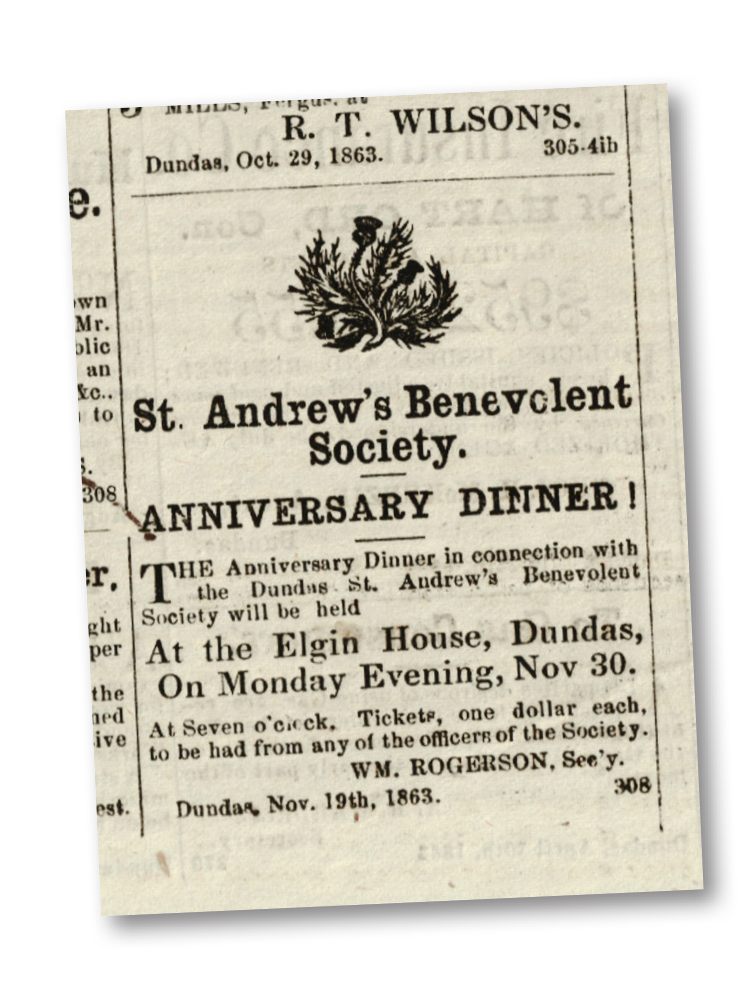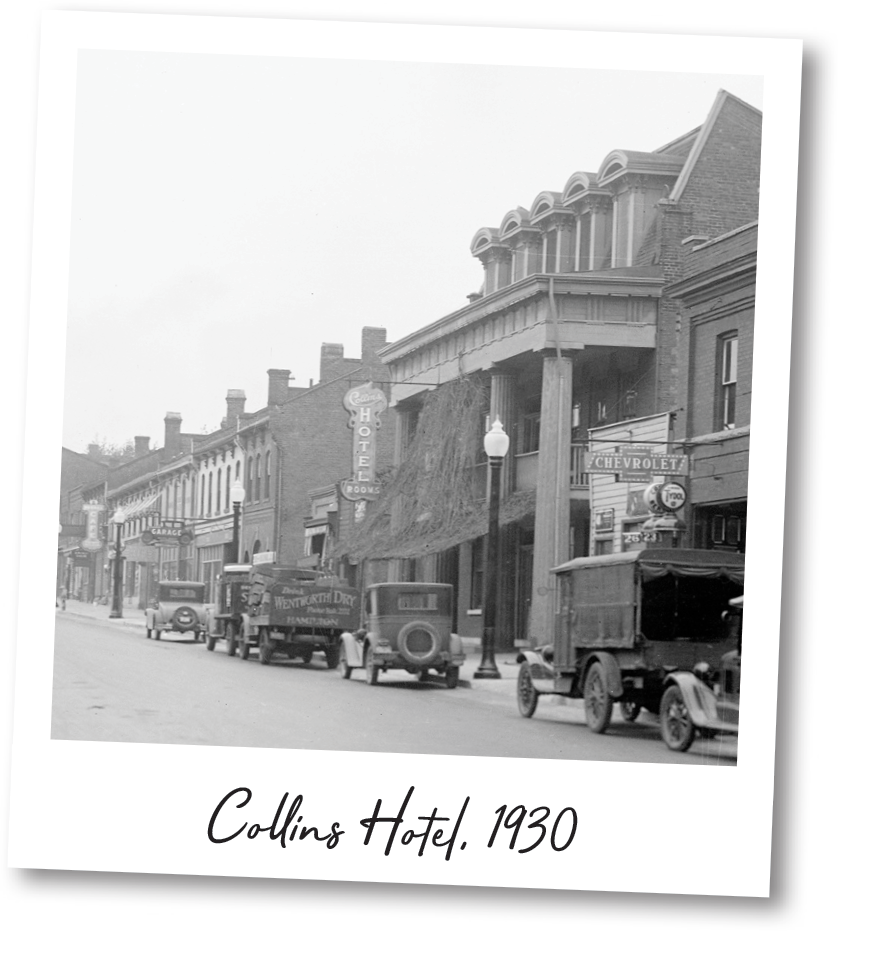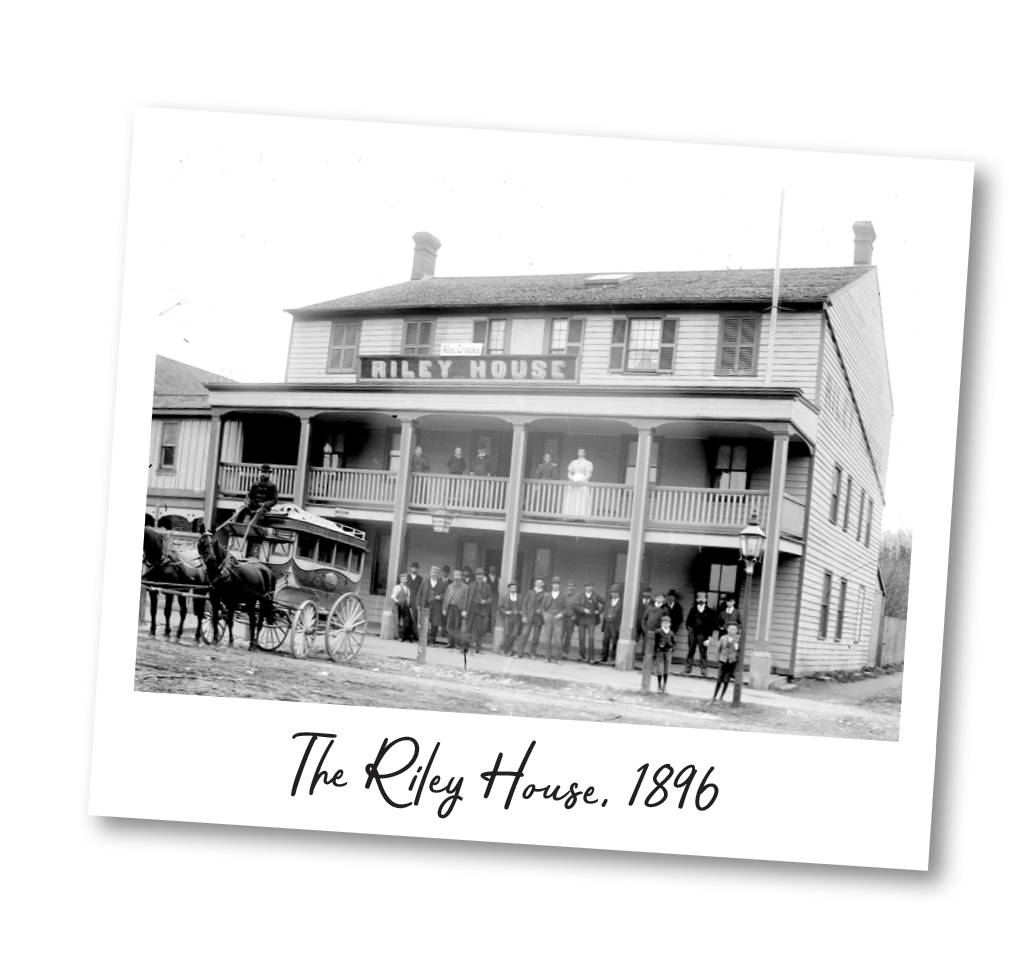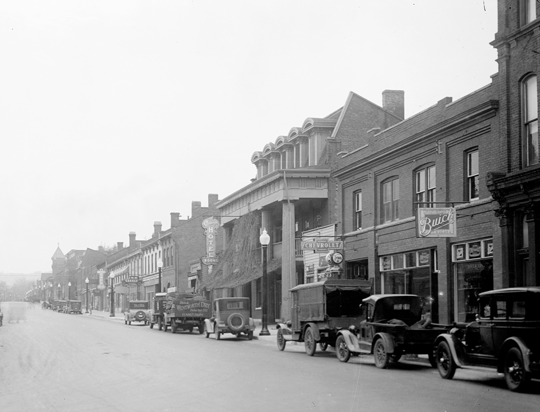Two things are apparent when you visit the town of Dundas, Ontario: it’s quaint, and it’s old. But don’t be fooled! The sleepy town gets its architectural charm from its wild past of money, booze and good times.
Nineteenth-century Dundas had a staggering number of taverns and saloons. The town enjoyed an economic heyday after the Desjardins Canal connected the isolated valley to the Great Lakes shipping system. Dundas prospered as the commercial destination of farmers from across the region.

“The many taverns and hotels that sprung up catered to these farmers, who needed places to stay and places to spend their newly gotten monies” says Austin Strutt, Exhibitions Curator, Dundas Museum & Archives. “They were built to catch the eyes of visitors, with architectural flourishes that would entice patrons inside.” King Street was the main thoroughfare, so most taverns were on this strip. Here are some notable examples:

THE COLLINS HOTEL
Irish immigrant Bernard Collins opened the North American Hotel in 1841, but folks called it the “Collins Hotel.” The establishment had a great reputation for quality and service. It narrowly survived a devastating fire in 1881 but was gutted by flames in 1955, after which its Victorian interior was fully renovated. Today, the famous tavern retains the name of its founder as Collins Brewhouse Restaurant.
ELGIN HOUSE
William McDonnell, an enterprising former peddler and hotel manager, erected the opulent Elgin House. His Scottish-style tavern was lauded as “the finest hotel west of York.” Two radical reformers, Dr. John Rolph and William Lyon Mackenzie, were guests at the hotel’s grand opening banquet on November 30, 1837.
“Elgin House opened before the town was even incorporated,” Strutt says. “It did amazingly well and the town spread around it.”
An arched recess beside the door allowed horses and carriages access to stables out back. The keystone atop the arch says, “Wm. McDonnell 1837.” A law office now occupies the building.
THE RED LION
“This was one of the more infamous taverns,” Strutt says. “It was always getting busted for gambling, and for selling drinks on Sundays.”
The original building burned down in 1871 and was rebuilt in brick the following year. Temperance laws shut down the drinking establishment in 1916. It became the Wentworth Inn and, later, Dundas Café.
The former Red Lion is currently home to Bangkok Spoon Deluxe restaurant. An archway built for horses and carriages now leads to a cozy patio.

THE CENTRAL HOTEL AND MELBOURNE HOTEL
The Central and Melbourne Hotels, built in 1890 and 1899 respectively, represented a new turn-of-the-century style of hotel with large, modern amenities. Both were bars well into the late 20th century, and both still stand on the north side of King between Sydenham and Foundry. A decorative pyramid-topped tower still bears the name “The Central.”
THE RILEY HOUSE
One of the longest operating taverns in Dundas, The Riley House on Main Street no longer stands. It was built in 1827, the largest inn west of York (Toronto). Known for its fine food and extensive stables, it operated under many owners until prohibition. The building was demolished in 1956 to make room for a parking lot.
“There were many drinking emporiums and groggeries sprinkled along Main, King, and York, consequently they used to say that it took four days to travel from Galt to Hamilton, two of the days being needed to get through Dundas.”
– T. Roy Woodhouse, Dundas Historian

End of an Era
From the 1840s to the 1860s, a perfect storm of events brought the Dundas heyday to an end. Railways expanded. Ships got larger, rendering the shallow Desjardins Canal obsolete. Hamilton, with its deep water port, became the area’s commercial hub.
Eventually, Dundas learned to embrace its small-town charm. In 1896, Town Council published a picture book, Picturesque Dundas, to promote its architecture and surrounding natural beauty. To this day, Dundas is a visually striking, peaceful community enfolded in a giant hug by the lush Niagara escarpment.






